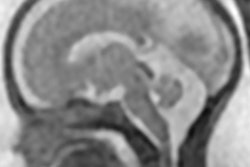Israel's healthcare system provides mostly free core services to 8.5 million citizens. But disparities continue to exist between Israeli Jews and Arabs -- including the use of imaging for disease screening, according to a new report focused on health in Israel and published in the Lancet.
The challenges are exacerbated by the fact that Israel faces historical, demographic, ethnic, political, and economic divides, report authors wrote: "While diplomatic relationships are either nonexistent or limited between Israel and its neighboring countries, shared public health issues such as disease, pathogens, or water sources require collaboration between Israel and its neighbors, most especially the Palestinian population."
"This series shows that there is an enormous opportunity to leverage the universally accepted principles of health as a sanctuary against conflict and inequity, and to achieve a brighter future for a deeply troubled region of the world," report contributing author Dr. Karl Skorecki of Rambam Health Care Campus in Haifa said in a statement released by the Lancet.
Life expectancy in Israel has increased, and now reaches 80 years for men and 84 years for women -- compared with 75 for men and 79 for women in 1993. Infant mortality has decreased dramatically over the same period, from seven per 1,000 live births to three.
Domestic spending on health has increased from 5% of Israel's GDP in 1960 to 7.6% in the 2000s, although funding from public sources has declined, from 70% in 1995 to 60% today, according to the report (Lancet, 8 May 2017).
But the real challenge is health inequalities across Israel's population, which consists of 74.8% Jews and 20.8% Arabs. Life expectancy is higher among Jews than among Arabs, for example: 80 years versus 78 for men, and 84 years versus 81 for women. Infant mortality rates are twice as high among Arabs as compared with Jews.
Arab women are less likely to participate in breast cancer screening programs, and therefore more likely to be diagnosed with advanced breast cancer. As well, lung cancer, diabetes, and heart disease are more common among Israeli Arabs, according to the report.
The authors make the following suggestions for improving Israel's healthcare system:
- Increase spending in the health sector from the current 7.8% of GDP to 9%, consistent with the average among countries in the Organization for Economic Co-operation and Development (OECD).
- Guarantee long-term funding for national health programs aimed at reducing smoking, lowering sugar and salt content, and encouraging physical activity.
- Curb the shift from public to private care, and ensure the Ministry of Health focuses on long-term planning and funding for health care services.
- Increase funding for home and community services to support an aging population.
- Extend maternity leave from 14 weeks to six months, provide contraception under health insurance plans, and introduce a formal government gender and health department in the Ministry of Health.
- Create an Institute of Health Research under the auspices of the Israel Science Foundation.
"Overall, health in Israel has improved steadily over recent decades but disparities persist," said Dr. Khitam Muhsen of Tel Aviv University, in the Lancet statement. "All government ministries should make addressing health disparities between rich and poor and Israeli Arabs and Israeli Jews a priority."
The Lancet report, published online on 8 May, is part of a set of country analyses the journal is producing, and includes papers authored by academics and policymakers in Israel. It will be highlighted at the annual conference of the Israel National Institute for Health Policy Research in Tel Aviv.



















